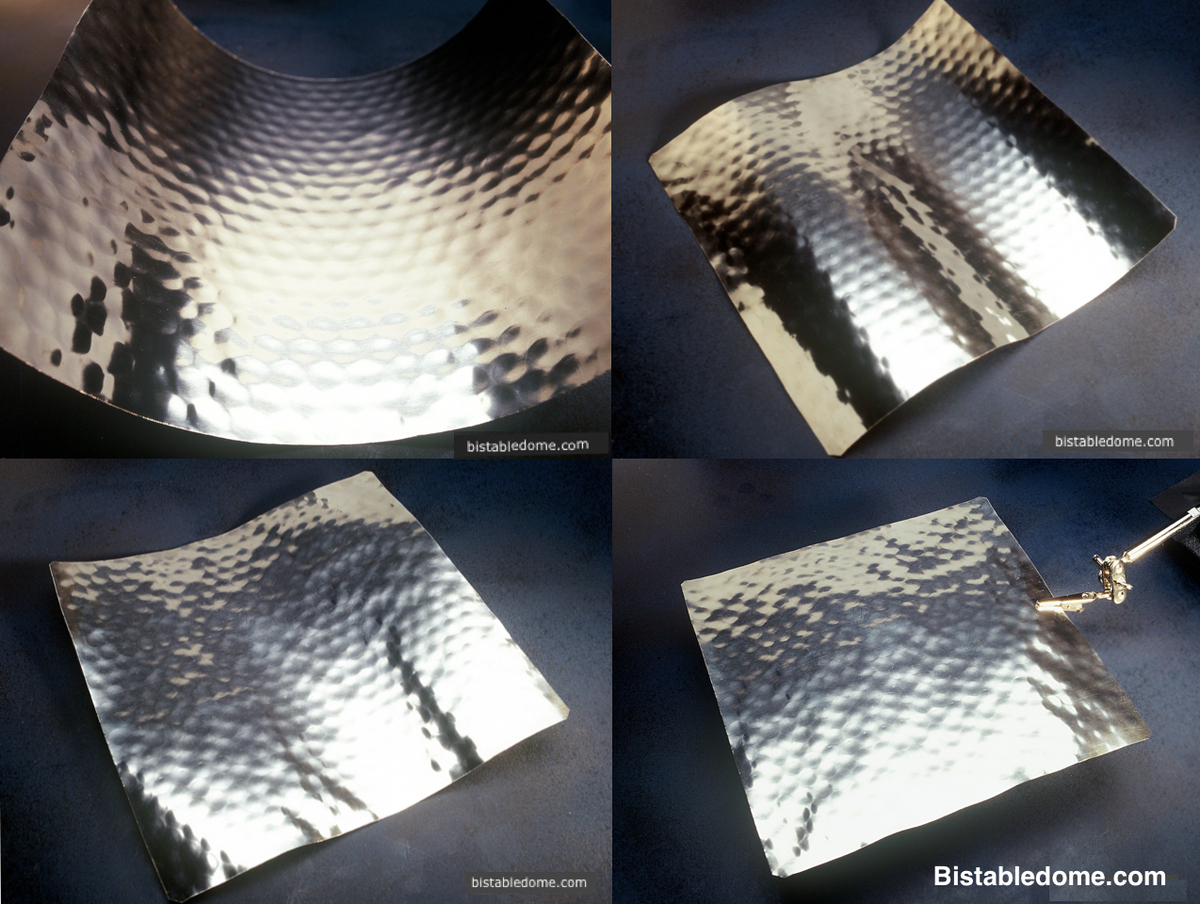Interesting concept... would be fun to play with a sample.... real world applications ?

 www.bistabledome.com
www.bistabledome.com
Bistabledome.com: flex actuated overlapping bistable domes
Flex actuated overlapping bistable domes (OBDs) are used for paper thin shape sensors, stiffening and shaping thin high strength steel, and a pump that pumps when bent.

